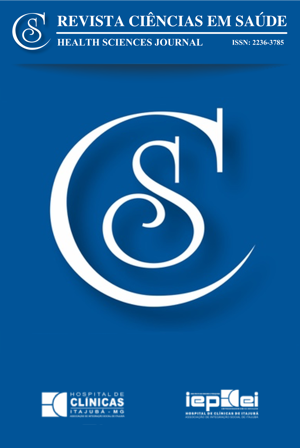The importance of physical activity in the elderly population with comorbidities in a post-pandemic era
Main Article Content
Abstract
During the COVID-19 pandemic, the world faced significant challenges that impacted all age groups. Among the most vulnerable groups, the elderly population with comorbidities had the greatest challenge to their physical, social, andmental health. The lockdown imposed by health authorities aimed at slowing the spread of the virus had a large drawback in terms of the level of physical activity, risk factors, frailty, and falls risk in the elderly. Furthermore, several health issues were exacerbated, including higher levels of obesity, diabetes mellitus, dyslipidemia, cardiovascular diseases, sleep problems, and depression.
A decrease in the level of physical activity was observed following quarantine, and this trend prevailed even a year after the early stages of the pandemic. A large populational study in individuals more than 65 years old showed that during the early years of the pandemic, nearly 30% of them experienced an impairment in exercise levels, which was significantly related to detriments in quality of life, and this trend prevailed even a year after the early stages of the pandemic. Given this post-pandemic scenario, it is essential that we redefine strategies to improve the quality of life of these demographics.
Article Details
Authors maintain copyright and grant the HSJ the right to first publication. From 2024, the publications wiil be licensed under Attribution 4.0 International 
 , allowing their sharing, recognizing the authorship and initial publication in this journal.
, allowing their sharing, recognizing the authorship and initial publication in this journal.
Authors are authorized to assume additional contracts separately for the non-exclusive distribution of the version of the work published in this journal (e.g., publishing in an institutional repository or as a book chapter), with acknowledgment of authorship and initial publication in this journal.
Authors are encouraged to publish and distribute their work online (e.g., in institutional repositories or on their personal page) at any point after the editorial process.
Also, the AUTHOR is informed and consents that the HSJ can incorporate his article into existing or future scientific databases and indexers, under the conditions defined by the latter at all times, which will involve, at least, the possibility that the holders of these databases can perform the following actions on the article.
References
2. Hoffman GJ, Malani PN, Solway E, Kirch M, Singer DC, Kullgren JT. Changes in activity levels, physical functioning, and fall risk during the COVID-19 pandemic. J Am Geriatr Soc. 2022;70(1):49-59 https://doi.org/10.1111/jgs.17477 PMId: 34526288
3. Tamai K, Terai H, Takahashi S, Katsuda H, Shimada N, Habibi H, Nakamura H. Decreased daily exercise since the COVID-19 pandemic and the deterioration of health-related quality of life in the elderly population: a population-based cross-sectional study. BMC Geriatr. 2022;22(1):678. https://doi.org/10.1186/s12877-022-03316-9 PMId: 35974303 PMCId: PMC9380974
4. Oliveira MR, Sudati IP, Konzen VM, de Campos AC, Wibelinger LM, Correa C, Miguel FM, Silva RN, Borghi-Silva A. Covid-19 and the impact on the physical activity level of elderly people: A systematic review. Exp Gerontol. 2022;159:111675. https://doi.org/10.1016/j.exger.2021.111675 PMId: 34954282 PMCId: PMC8695515
5. Bull FC, Al-Ansari SS, Biddle S, Borodulin K, Buman MP, Cardon G, et al. World Health Organization 2020 guidelines on physical activity and sedentary behaviour. Br J Sports Med. 2020;54(24):1451-62. https://doi.org/10.1136/bjsports-2020-102955 PMID: 33239350 PMCID: PMC7719906
6. Tekkus B, Mutluay F. Effect of community-based group exercises combined with action observation on physical and cognitive performance in older adults during the Covid-19 pandemic: A randomized controlled trial. PLoS One. 2023;18(12):e0295057. https://doi.org/10.1371/journal.pone.0295057 PMId: 38051723 PMCId: PMC10697542
7. Balducci S, Zanuso S, Nicolucci A, De Feo P, Cavallo S, Cardelli P, et al; Italian Diabetes Exercise Study (IDES) Investigators. Effect of an intensive exercise intervention strategy on modifiable cardiovascular risk factors in subjects with type 2 diabetes mellitus: a randomized controlled trial: the Italian Diabetes and Exercise Study (IDES). Arch Intern Med. 2010;170(20):1794-803. https://doi.org/10.1001/archinternmed.2010.380 PMId: 21059972
8. Fien S, Linton C, Mitchell JS, Wadsworth DP, Szabo H, Askew CD, et al. Characteristics of community-based exercise programs for community-dwelling older adults in rural/regional areas: a scoping review. Aging Clin Exp Res. 2022;34(7):1511-28. https://doi.org/10.1007/s40520-022-02079-y PMId: 35152393 PMCId: PMC8852913
9. Gonçalves PEO, Nogueira TS, Passos BR, Pereira DAG, Thomas S, Britto RR. Adherence to Heart Rate Training Zones in an Exercise Training Program in Adults With Coronary Artery Disease. Rev Cienc Saude. 2023;13(4):3-4. https://doi.org/10.21876/rcshci.v13i4.1646
10. Miller MA, Ballard J, Feld H, Ryan M. Learning with, about, and from COVID-19: An interprofessional global comparison of pandemic responses. Curr Pharm Teach Learn. 2023;15(9):829-35. https://doi.org/10.1016/j.cptl.2023.07.012 PMId: 37482496
